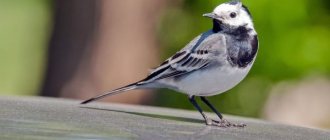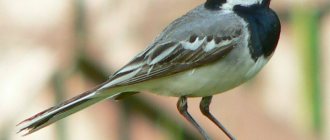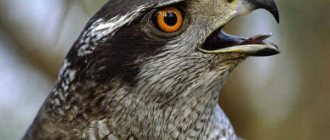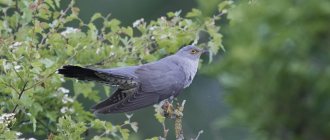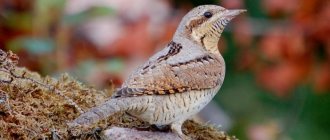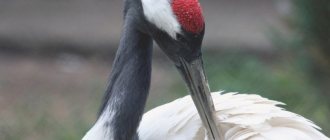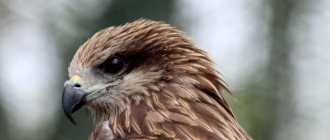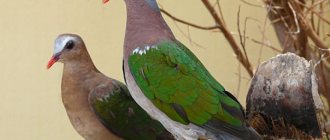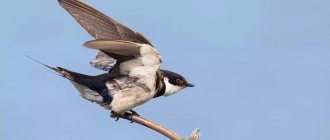Description of the bird
In everyday life, people are surrounded by a wide variety of different and amazing birds. They differ in their color, habits, and lifestyle. Among them there is also a nondescript gray migratory bird, which is no different from all the others, called the wagtail. The bird is classified as a songbird.
White wagtail
The amazing feathered wagtail is found everywhere. Basically, its habitats are located closer to water. But it happens that these birds can also be found in places remote from water bodies.
Fields, pastures located next to residential buildings and large new buildings, places high in the mountains are also their frequent habitats. Wagtails are divided into 4 species, but the most common and popular among them is the white wagtail.
, the wagtail bird is an inconspicuous and primitive creature. In fact, it is a symbol of Latvia. For many people, this bird symbolizes good luck and prosperity. And the one in whose house she settled must be very lucky in some way.
Yellow wagtail
This bird is quite easy to distinguish from all its other brethren. It has a very narrow black beak, a black breast and a black cap on its head. The feathers on top of the bird are gray.
The underside of the bird is white. The wings alternate between grey, brown and white. The wings have a sharp end. They lie on the bird's long black tail. We can say about the feathered legs that they are thin and long.
This helps the bird to easily look for prey among the grass. The bird's button-black eyes are framed by a white mask. The size of the bird does not exceed the size of an ordinary sparrow.
Although visually it may seem that they are much larger. This is because wagtails have longer limbs than sparrows. The bird weighs no more than 30 g, its length is about 20 cm.
Red-breasted Wagtail
The color of the white wagtail is dominated by more white and gray tones. The yellow wagtail is slightly different from its white relative in its color. According to the description, the yellow wagtail has a more yellow color.
This is especially noticeable among male birds. The birds received such a strange name due to the constant movement of their tail. He does not stop moving even when the birds are completely calm.
How often to feed the chick?
Once you have identified the type of bird, it is important to create a feeding schedule. Usually forest birds wake up around 07:00 in the morning and fall asleep at 19:00 in the evening. You can set your watch by warblers. Early in the morning, as soon as the chick gives in, you need to feed it. Then you need to time the time until the chick demands food again. This usually happens after 15 minutes or half an hour.
It may also happen that you will have to feed a chick that has fallen out of the nest on your own schedule, because the bird will not vocalize. It is permissible to choose a period of half an hour. You cannot force a chick to starve for more than two hours. In this case, the bird's metabolism may be disrupted, which will lead to its death.
At night, the chicks usually sleep. But even if they are awake, they do not tweet. At night it is better not to disturb the bird. But when she tries to attract attention by making loud noises, it is advisable to feed her and give her water to drink.
If night feedings do not help the bird calm down and fall asleep, it means that the bird does not receive enough of the substances it needs and does not feel full. In this case, it is recommended to find an ornithologist in the city or via the Internet so that he can determine the type of bird and explain how and what to feed the chick that has fallen from the nest.
Features and habitat
Places with a temperate and warm climate are the favorite habitats of the white wagtail. It is found in Europe, Africa and Asia. In warm places, birds lead a sedentary lifestyle. Other wagtails migrate to these same places from places with cold climates.
The habitats of the yellow wagtail approximately coincide with the habitats of the white one. Only their lifestyle and behavior are somewhat different. The arrival of the yellow wagtail from cold places is observed much later than its white relative.
Immediately after the flight, she begins to work closely on building a nest. Birds also have some differences regarding their nests. The fact is that the white wagtail has less fear of people.
The bird builds its nests directly on the surface of the earth under hummocks or in the grass. The yellow wagtail is more careful in this regard; its nest is located in more secluded places.
Male wagtails always carefully guard their nests. When they contain eggs, their vigilance doubles. As soon as a potential enemy approaches the nest, the birds begin to scream heart-rendingly, warning everyone around them from danger and trying to scare away the enemy.
In terms of protecting their nest and offspring, wagtails show incredible courage. They are so bold that they can pounce on a bird of prey without hesitation. They are among the very first to arrive to us. Therefore, wagtails have the right to be called harbingers of spring.
These birds do not like dense forests. Basically they prefer to settle in open forests. But among them there is a species whose nests can only be seen in the forest. We are talking about the tree wagtail.
What to feed the chick?
For a tiny bird that has not yet fledged, as well as one that is naked in places, in the first 1-2 days it is permissible to feed porridge (mash) prepared in a blender and feed it to the bird through a syringe. Feathered babies can also swallow pieces of insects. And they swallow porridge easily.
If the chick is a fledgling, that is, it has already fledged, makes short flights and differs from its parents only in its yellow mouth, it must be fed with pieces of thawed or fresh insects. If you don’t have them, you can get by with mash for the first day. It is recommended to diversify the bird's diet with foods suitable for its species.
Food from available products
When a person finds a defenseless bird, the first thought that arises is what to feed the chick that has fallen out of the nest. Indeed, every bird requires food provided by nature, and therefore it is worth focusing on the type of bird. But before it comes to searching the Internet for the characteristics of the bird, you need to prepare food for the chick from available materials.
Liquid food for the chick until special food has been purchased: -1 cup of fresh cucumber (can be replaced with carrots or green salad); - 1 tsp. oatmeal (you can take millet or other cereal); - 3 tbsp. l. water at room temperature; - a quarter of a boiled chicken egg.
Porridge for chicks from ready-made food: - 1 tsp. oatmeal (it is acceptable to use buckwheat or millet); - 1 tsp. food consisting of dried insects, including minerals and vitamins; like, for example, Claus Nestlingsfutter; - 2 tsp. water.
From all the ingredients you need to create a liquid paste using a blender. The resulting porridge should be drawn into a syringe (without a needle) and given to the chick. A hungry tiny forest bird can swallow 5 cubes at once. If you are full, 1 is enough. On average, a chick eats about 2.5 cubes every half hour during daylight hours. Some chicks eat every 15 minutes, especially if they are cold and the food is not selected correctly.
The end of the syringe must be wiped with a clean paper napkin so as not to smear the plumage with drops of porridge. It is impossible to wash or dry the bird and, in general, you should not do this. If the porridge gets on the chick's head or eye, you need to moisten a clean cotton swab with water and gently, without pressing, wipe off the droplet. The syringe from which the chick receives food must be washed under running water after each feeding.
On the Internet, advice is given on how to prepare a mash that includes cottage cheese and other things that birds do not eat in the wild. It is better not to feed the chick dairy products.
Mash as food for birds is permissible only in the first couple of days. You should seriously consider what to feed the chick the rest of the time and create a complete, balanced diet for it.
Chicks that receive porridge and mash as a constant diet suffer from problems with plumage and, in general, with health. These birds do not develop properly and usually die before they reach the age when they could have a chance to return to their natural habitat.
Ornithologists recommend feeding chicks with lean baby meat puree and baby dairy-free porridge. Mashed potatoes and porridge should be at room temperature. It is easy to feed them into the chick's beak using a syringe. It is better to choose a smaller syringe than the one seen in the animated photos posted on this page. But it is better to constantly (for 2-4 weeks) feed the chick with mixtures for wild birds or parrots.
Constant food for the chick is selected after recognizing its species
No matter who the chick turns out to be, you cannot stuff it with fatty foods: - lard; - oil; - raw fat; - fatty meat; - mealworms.
Omnivorous, predatory, insectivorous and granivorous birds live in Eurasia. Having determined the type of bird, you should choose food for it:
1. Birds of prey or carnivores eat meat. It is recommended that they be given raw chicken meat. Better frozen in the freezer and thawed. Birds of prey include: - crows, crows, magpies (they are omnivores, but the chicks need protein); - falcon (some people confuse it with a black swift chick); - seagulls; - owls; - hawk; - jays; - kite.
Among the predators there are many omnivores, such as ravens, crows and others. It is permissible to add insects to the diet of these birds.
2. If you are going to feed a chick of an insectivorous bird, you will need to purchase frozen insects on the Internet or in a pet store. Larvae and pupae are better suited for feeding. It is also worth considering that all insectivorous birds love fruits and berries. At home, insects should be fed to chicks: - woodpeckers; - warblers; - tits; - wagtails; - swift; - swallows; - starling; - thrush; - cuckoos; - robins.
Insectivorous chicks will not develop properly if they are fed only grains, fruits and cereals. They need different insects (feeding on one type can make them sick).
Insectivorous birds are distinguished by their sharp elongated beak. Even tiny chicks have a beak that is elongated and pointed at the end. The animated photograph above shows the yellowthroat of the insectivorous forest bird, the warbler. Such a chick needs to be fed insects.
3. It is easy to feed a granivorous chick with grains or porridge from them: - finch; - dove; - sparrow; - goldfinch; - wild pigeon; - turtle doves.
Granivorous birds often turn out to be omnivores and catch insects while feeding their chicks. Therefore, it is permissible to add fresh or frozen insects to the diet of a pigeon or sparrow. Dry ones should not be given to the chick (dried insects contain more protein than required).
Fledgling food
It is recommended to give insects to a grown bird that is trying to fly or already knows how to fly, if it is an insectivore. Otherwise, the food for the chick should be a mixture of different types of grains, with pieces of insects added to it.
On the Russian-language Internet, it is recommended everywhere to feed chicks with ant pupae, earthworms and mealworms, caterpillars and flies. People read these tips and stuff their still naked chicks with huge, hard, live caterpillars. The insects remain in the chick's stomach for a long time, during which time they eat their way out through the bird's internal organs.
To prevent this from happening, the parents of the chicks tear off the heads of the insects and only then give the headless bodies to the children or eat them themselves. If you decide to feed the chick with live insects, you will need to remove their heads or freeze them in the freezer. And give the already dead, defrosted ones to the chick.
Some insects, such as fly larvae, are able to come to life after defrosting. To avoid damage to the bird's internal organs, it is necessary to decapitate frozen worms, caterpillars and other insects.
It is unacceptable to feed the chick earthworms, as this will cause it to become infected with helminths. In general, certain types of insects are suitable for each bird. In addition, insects can be poisonous. If your knowledge of entomology is minimal, it is advisable to pay attention to ready-made food for chicks, which is sold in pet stores.
It is recommended to buy them for people who are not able to harm living beings, including insects. A simple way is to use nutrient mixtures consisting of dead and dried insects, vitamins and healthy supplements. Pet stores offer different foods for chicks. These are not easy to find, but after talking with the seller, you will be able to find food for the tiny bird.
It is acceptable to use for feeding a chick: - Claus Nestlingsfutter - food with insects, minerals and vitamins, created specifically for chicks of forest birds that have fallen out of their nests (reviews are contradictory); — Nutribird A19 and Nutribird A21 are complete food with all the necessary additives, produced for feeding chicks (rave reviews).
Insects and grains do not stain the bird during feeding. Perhaps only the beak, which can be easily cleaned with a clean cotton pad moistened with water. But liquid mixtures can turn a bird into a dirty ball of feathers. Having chosen to feed a bird with porridge, you need to promptly rid it of drops that have fallen on its plumage, skin, eyes, beak, and paws. We must not forget that it is unacceptable to feed the chick only liquid mixtures, mashes and porridges.
As mentioned earlier in this article, it is important to determine what species the chick is. You cannot do as advised by home-grown experts - volunteers with experience in rescuing birds. Many of them insist, sometimes even in an aggressive manner, that the chick should receive only live insects for food. But this is fundamentally wrong. If the chick is a granivorous bird, it may have digestive problems that can lead to its death.
If the chick of an insectivorous bird does not receive enough nutrients from the food that a person offers it, the part of its head near the beak and around the eyes may not feather. This is a sign that more fresh or frozen insects need to be included in the bird’s diet (the bird must be fed defrosted insects at room temperature).
Insects suitable for the chick: - crickets; - silkworm pupae; - ant pupae; - larvae of bees and flies.
It is important to consult with an ornithologist in a timely manner about the diet for a bird that has fallen from the nest. People posing as experts on the Internet claim that a chick needs a lot of protein. In fact, the abundance of protein in the diet of even an insectivorous bird can lead to sad consequences: - the bird will develop diarrhea; - wings may become motionless; - the chick will no longer stand on its legs; - inflammation may occur on the beak; - the bird will experience convulsions; - the chick will die.
Character and lifestyle
This bird is one of the most useful among its fellows. It can destroy simply a huge number of flies and insects that harm humans. In order to catch them, she only needs to hunt for them in flight.
Gardeners treat birds with respect. It can destroy pests directly from the garden. Birds are distinguished by their great mobility. A calm bird can only be seen when its favorite song is being sung.
The bird is characterized by gullibility. Sometimes a stranger can come very close to her. At the end of summer, all wagtails try to flock together and, together with swallows and starlings, find refuge in the reed thickets.
Before migrating to warm countries, birds become especially vigilant. At these moments, they not only keep the enemy away, but it is also difficult for a person to approach them.
During the night's rest, they do not stop calling to each other. It doesn't depend on whether anyone bothers them or not. The autumn migration takes two months.
It is interesting to watch the bird as it moves along the ground. She does this quickly, one might say running. It seems that the bird moves with the help of wheels.
Wagtails fly beautifully. They do this best at low altitude. They easily fly around grass and can turn sharply with the help of their tail, which plays the role of a rudder. The wagtail bird is a friendly feathered bird. Birds prefer to live in columns.
Population and species status
The wagtail bird does not belong to the category of birds that are threatened with extinction, although the numbers of some species are declining from year to year. As a rule, this is facilitated by both the high fertility of the species and the practice of confronting natural enemies, since they greet predators as a whole group, with loud screams. Naturally, this puts a certain pressure on the predator, which has no choice but to leave the territory.
These birds have been given the status of vulnerable species because their numbers are declining. As a rule, such trends are associated with human activity, which deprives birds of their natural habitat.
Nutrition
Insects occupy the main place in the diet of birds. Moreover, on especially difficult days, when there are fewer insects, the wagtail can zealously guard its territory and prevent competitors from hunting on it.
If there are no problems with insects, then the bird can show kindness and allow the uninvited guest to hunt together, but it must go or fly first.
White wagtail eggs
Due to a lack of insects, wagtails sometimes have to change their place of residence. Sometimes they may eat seeds or plants instead of insects, which does not happen often. The wagtail returns to its native habitats around March-April. From this period their mating season begins.
What to do if the chick does not open its mouth?
The bird may not open its beak at all because it is afraid or because of an injury it received as a result of a fall. In any case, it is necessary to show it to an ornithologist or at least a veterinarian.
Actions should be taken that will force the bird to open its mouth: - lightly rock the nest or take the chick in your palm and rock it; the bird will think that its mother landed on a branch to feed it, so it will open its beak; - quietly scrape your nail along the cage, table, jeans; - talk quietly to the bird; - show the syringe from all sides so that the bird pays attention to it; - move your finger near the chick’s head; - lean towards the bird; - slowly raise your palm in front of the chick; it reminds him of his mother flying to the nest.
If the chick does not suffer from any injuries that may have occurred when it fell from the nest, it constantly asks for food. The yellowthroat quickly understands (literally on the second day of being in the house) that the guardian's voice means that the breadwinner is somewhere nearby, and therefore the chick screams loudly when it hears what a person it knows is saying. The sound of the cage door opening tells the bird about the same thing, so it opens its mouth. The chick also detects with its eyes that the door is opening and can react to this movement.
Reproduction and lifespan
During the breeding season, males become a little different, their color changes for the better, the color of the plumage has more rich colors and contrast. The female lays about 6 eggs, gray in color with small dark dots.
The female needs two weeks to hatch her eggs. The male stays next to her and the future offspring all this time. He not only protects the female and eggs, but also takes full responsibility for her food. After the chicks appear, caring for them falls on the male and female equally.
White wagtail chicks
After two weeks of parental care, the little chicks gradually begin to leave the parental nest. But at the same time, they take on the experience of adults for a long time and only closer to autumn can they live independently. The lifespan of wagtails is about 12 years.
Is it possible to release the chick into the wild?
In Europe, it is legally prohibited to keep wild birds at home. If a bird was picked up by a chick and remains in a human home, it may be removed and euthanized. To avoid such situations, compassionate people raise chicks and release them into the wild. Others take the chicks to special stations, where the babies are fed and when they grow up, they are released into the wild.
In the CIS, rare veterinarians and advisors on forums recommend raising a chick and releasing it into its natural habitat. However, a bird raised by humans is practically incapable of recognizing danger, and therefore can easily become the prey of a predator. She doesn’t know how to find food for herself, so she can die of hunger.
Once found, the chick must be placed at home in a spacious enclosure and the bird must be kept for its entire life. If you do not want to take care of the birds, it is advisable to find a person who specializes in raising wild birds and then releasing them into the wild or keeping them in their aviary. It’s easy to find one on forums and social networks.
Mating season
As soon as the birds return from warm places, they divide into pairs. Every year, wagtails select new partners. Each male occupies a territory for himself, where he attracts his mate by singing. It sounds like a chirp with different intonations. Very often they have to compete with other males. At the same time, they behave aggressively towards their opponent. When it comes to the courtship dance, the male lowers his head, puffs up his tail and wings, tracing circles around himself.
Having decided on a pair, the birds stay together and mate a few days later. Afterwards they select a place for the nest - in bushes, crevices, hollows, holes. Although both partners work on the construction, the female white wagtail constructs the main part of their house. These birds make a cup-shaped nest made of brushwood, moss, grass, and roots. The female covers the bottom with down or wool. But the shape of the nest may depend on the chosen location. In total, these birds can take from 6 to 12 days to build. But even after lining their nest, they may not populate it for several more days.
What does a jay bird look like?
The jay is the size of a jackdaw. It has bright, loose plumage, a noticeable wide crest on the head and a rather long tail. The color of the body is reddish-brown, the wings, tail, and in some subspecies the top of the head are black, the rump is white, the feathers on the shoulders are bright blue with narrow black stripes.
Interesting materials:
How does international delivery work? How does MFC work during the New Year holidays 2022 Moscow? How does MI Cloud work? How does miramistin work? How does a mobile phone with two SIM cards work? How does Avito moderation work? How does sea salt work for hair? How does the Moscow metro work? How does soap suds work? How does soap chemistry work?
Lifestyle
— Advertising —
Most wagtails stay near water in separate families or small flocks; Wagtails nest on the ground or in hollows.
Migratory bird or not
Wagtails are migratory birds . But migratory behavior depends on the habitat of each specific population. Basically, all bird species in the northern regions are migratory birds. Wagtails winter in southern Europe, Asia, and Africa. Endemic to the African continent and the islands of Madagascar, they are sedentary birds.
Unlike most small birds, it moves on the ground not by jumping, but by running.
Nutrition
Wagtails feed exclusively on insects. Some of them, for example, dragonflies, are caught in flight. But much more often, when hunting, birds quickly run along the ground, and when stopping, they swing their long tail down and up.
Spreading
The yellow wagtail is distributed in the Palearctic zone: in most of Eurasia (except for the Far North), North Africa, Southeast Asia, North America and western Alaska. It lives almost everywhere in Russia, with the exception of the Caucasus, tundra and southern Sakhalin.
This bird, the yellow wagtail, is migratory and is found in nesting areas from April to September or early October. In some southern regions of its range it leads a sedentary life. Winters in South Asia, Africa, the islands of the Malay Archipelago and the Philippines.
During the nesting period, it is found in swampy or wet meadows, in lowland areas of the forest-steppe and steppe zones, in river valleys, grass swamps with shrubs.
The yellow wagtail rarely inhabits the continuous taiga; it nests along river banks, and nesting densities can vary significantly. In some places, under similar conditions, they may not exist at all, while in others, dense settlements are formed in which pairs coexist at a distance of several tens or hundreds of meters from each other.
Coloring Features
Males in breeding plumage have a gray or bluish-gray color of varying intensity on the crown, upper side of the head and neck. In all cases, the color shade of the top of the head and neck differs sharply from the color of the back. The ear coverts are the same shade or blackish grey, with little or no white feathers. Occasionally there is also an admixture of blackish feathers on the crown. Above the eye, a white eyebrow is expressed to varying degrees, which can sometimes be absent. The ratio of the number of green (against the background of gray coloring) and yellow feathers (on the eyebrow and light parts of the ear coverts) on the head varies among different individuals. The back is plain, olive green. The underparts are an even bright yellow shade, sometimes with a noticeable darkish spot in the center of the chest. The throat is partially or completely devoid of yellow color. The plumage of the legs is whitish. The flight feathers, large wing coverts and the three central pairs of tail feathers are brownish-black. On the outer webs of the secondary and tertiary flight feathers, as well as on the upper wing coverts, a whitish marginal border is developed, often with a yellowish or greenish coating. The three outer pairs of tail feathers in the apical part are white with black wedges at the base. In females, the color of the upperparts is duller, olive or olive-gray, while the intensity of the olive or greenish-olive tone increases closer to the loin. The color of the top of the head is similar to the color of the back or somewhat grayer, but in all cases the sharp boundary between the color of the head and back, characteristic of males, usually does not exist. The throat and chest are often whitish. Solid yellow coloring is present only on the belly; on the chest, yellow color is widespread only in the form of separate, although sometimes numerous, spots. The beak, legs and claws are dark. The beak is sharp, rather long, wide at the base. The claw of the hind toe is evenly curved, approximately equal or shorter in length than the toe itself (usually less than 10 mm).
Young birds in nesting plumage differ sharply from adult birds. The main background color of the top is brownish-brown, sometimes with greyish, ocher or olive tints. The upper side of the head and back are with black streaks, which, in combination with the light edge of the feathers, give a “motley” or “scaly” pattern. The neck looks lighter and more uniform in color because it is devoid of dark spots. The underside of the body is light, with an ocher tint, more intensely expressed in the chest area, on the sides and on the undertail. The throat is lighter in color. In the area of the goiter there is always a well-defined necklace of clear black streaks. On the sides of the necklace, the streaks are concentrated into two large black spots, from which the dark color extends to the rear edge of the ear coverts and, in the form of black stripes on the sides of the throat, to the corners of the mandible. On the sides of the head, above the eyes and ear coverts, there are light buffy eyebrows. On top of the light eyebrows on the sides of the cap there are black brow stripes. The ear coverts are the same shade as the cap, with light longitudinal streaks and sometimes with blackish tips. The wing coverts, flight feathers and central tail feathers are blackish, with a light brownish-buff or olive border around the edge.
Wagtail house
A wagtail house is different from a birdhouse because the wagtail needs a place to shake its tail. It should be rectangular in shape, 40 cm long, 15 cm wide and about 15 cm high. It is recommended to move the front wall of the house inward by 10 cm to form a “balcony with a roof” on which the bird will walk. The entrance hole, 6 cm wide, is made at full height. It is better to make such a house from a pine board 1.5-2 cm wide.
Drawing
Materials and sizes
To build a house for a wagtail we will need the following materials (board - without paint):
- Pine plank: 1-2 m2;
- Wood screws: 14-16 pieces;
- Hacksaw: for wood or metal.
| Floor and roof | Pine plank - width 15 cm, length 40 cm (2 pcs.) |
| Side walls | Pine plank - width 15 cm, length 30 cm (2 pcs.) |
| Back wall | Pine plank - width 15 cm, length 15 cm (1 pc.) |
| Front wall | Pine plank - width 9 cm, length 15 cm (1 pc.) |
